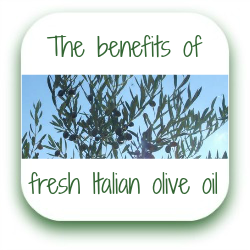- Home
- How to store olive oil
Storing olive oil to use in the kitchen
and at the table.
If you invest in any good quality olive oil it's wise to know how to store it to keep it at its freshest. We use the knowledge we've gained from our Italian friends who've grown their own olives for centuries - and who help us with our olive harvest every year - to explain how important storing olive oil properly is.
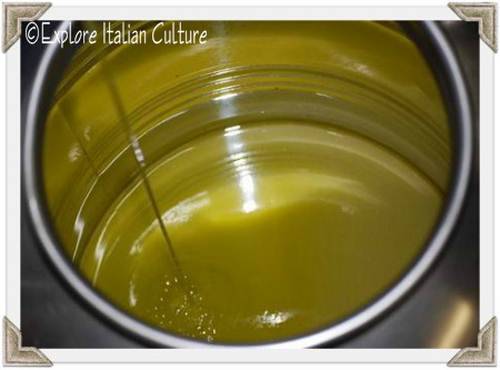
Our cold-stone-pressed olive oil looks like pea soup as it comes off the presses.
Why is storing olive oil important?
The minute olives are taken from the tree, even if the harvest is completely unmechanised, as ours is, they begin to decompose. The process of stripping from the trees, de-leafing, removing other debris, crating and taking to the mill all have an effect on the fruit.
The more quickly it's done the better. Our olives get to the local mill to be pressed into oil within twenty-four hours of picking.
Gathering the olives is hard work! Cath in our olive grove at harvest time.
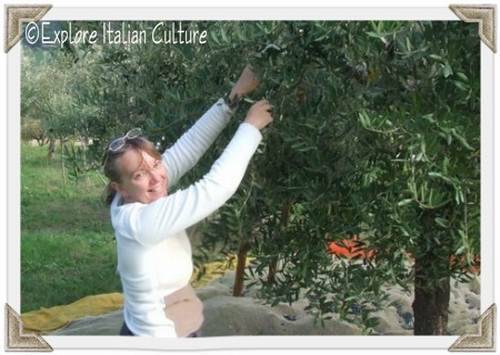
The three enemies at picking : heat, air and light.
There's a saying in this part of Italy that there are three main enemies of olive oil : heat, air and light. To maintain its freshness and flavour, the oil must be protected from all three from the moment the olives are taken from the trees.
For our olives we can control that process to a large extent. The olives are picked when the chances of rain are low to nil and kept in as cool and dark a place as possible as soon as they come off the trees (our garage, in fact!). To prevent air damage, they're milled very quickly.
Commercial producers also try to imitate this speed to avoid degeneration of the oil, although the period of time between the olives being picked and the oil appearing on supermarket shelves is far, far longer - so the oil is likely to be much less fresh even before you buy it.
A few of our olives, freshly picked and about to be transported to the mill.
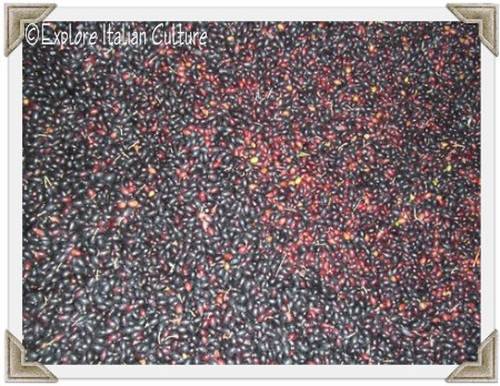
Storing olive oil at the mill.
Once the milling process is finished and the beautiful, green oil starts to come out of the tap, it must be kept cool, dark and in as airtight conditions as possible.
For that reason, we out it straight into our large, stainless steel containers. These are very easily cleaned, dark - obviously - and airtight. There is a tight bung on the top which is not opened until the churn is empty. The oil is taken out via a tap in the bottom.
The oil is then kept in a cool place -we have a special room called a "cantina" - until we're ready to use it. At that point, it's tapped off into containers.
Our oil as it comes out of the mill. Notice the large, stainless steel container.
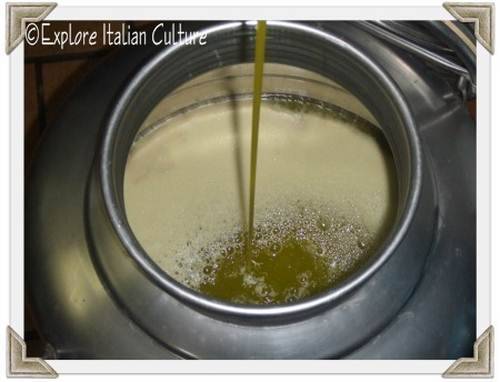
Storing olive oil for the kitchen and table.
The same conditions we keep oil in from the moment we pick the olives is exactly what we should all be aiming at when we're storing olive oil in the kitchen, and when we take it to the table.
We're lucky - we have ultra-fresh, cold stone-pressed oil available to us at the point of milling. There is really nothing like the taste of Italian olive oil within the first few days of milling.
Unless you have your own olive grove, though, you won't have the same luxury. By the time you buy it, no matter how fresh it's claimed to be, it will have gone through commercial processing including often many thousands of miles of transportation, a long time sitting in warehouses and then being stored on the shelves of shops.
The answer? Whether it's Californian, Greek, Spanish or Italian olive oil - buy the freshest you can. Look for a green, rather than a yellow, oil, and make sure you store it properly. Here's how.
- It should be kept in a cool, dry place. A pantry or cupboard away from the heat of the kitchen is ideal.
- It should be kept in a dark container. Many people store oil in a glass bottle, but it will degenerate more quickly because it's exposed to light. Ceramic or stainless steel is better.
- It should not be exposed to the air. Make sure the container at least has a closed top, if not an airtight bung.
What's the best kind of container?
Ceramic looks pretty, but since we've lived here and learned a lot from local people, we have gone for stainless steel. It's a little more functional looking but it is very easy to keep clean, it keeps the oil dark and it's probably the best type of container for maintaining its cool.
This type of container is ideal - and stylish at the same time.
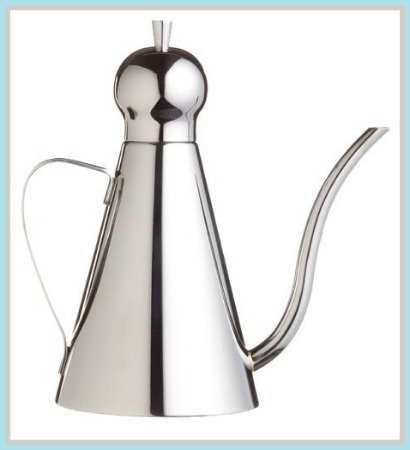
Want to buy this container now?
Want to know more about using fresh Italian olive oil?
Click on this image to go to a page which tells you why it benefits your family to buy as fresh and as well-preserved as you can.
Some links on this page are affiliate links, which means that if you purchase a product through them, we receive a small commission. There is no extra cost to you. To learn more please see our affiliates disclosure document.


